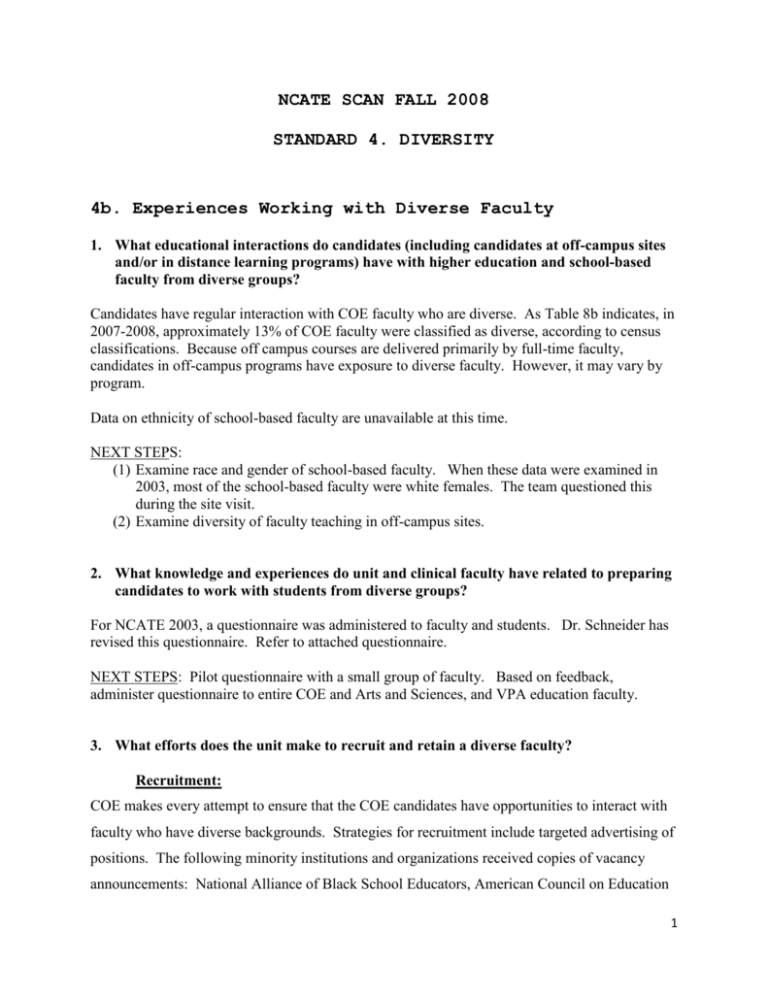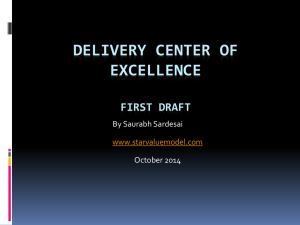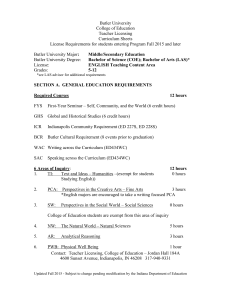NCATE_Diversity_Scan_Faculty_4b
advertisement

NCATE SCAN FALL 2008 STANDARD 4. DIVERSITY 4b. Experiences Working with Diverse Faculty 1. What educational interactions do candidates (including candidates at off-campus sites and/or in distance learning programs) have with higher education and school-based faculty from diverse groups? Candidates have regular interaction with COE faculty who are diverse. As Table 8b indicates, in 2007-2008, approximately 13% of COE faculty were classified as diverse, according to census classifications. Because off campus courses are delivered primarily by full-time faculty, candidates in off-campus programs have exposure to diverse faculty. However, it may vary by program. Data on ethnicity of school-based faculty are unavailable at this time. NEXT STEPS: (1) Examine race and gender of school-based faculty. When these data were examined in 2003, most of the school-based faculty were white females. The team questioned this during the site visit. (2) Examine diversity of faculty teaching in off-campus sites. 2. What knowledge and experiences do unit and clinical faculty have related to preparing candidates to work with students from diverse groups? For NCATE 2003, a questionnaire was administered to faculty and students. Dr. Schneider has revised this questionnaire. Refer to attached questionnaire. NEXT STEPS: Pilot questionnaire with a small group of faculty. Based on feedback, administer questionnaire to entire COE and Arts and Sciences, and VPA education faculty. 3. What efforts does the unit make to recruit and retain a diverse faculty? Recruitment: COE makes every attempt to ensure that the COE candidates have opportunities to interact with faculty who have diverse backgrounds. Strategies for recruitment include targeted advertising of positions. The following minority institutions and organizations received copies of vacancy announcements: National Alliance of Black School Educators, American Council on Education 1 Minority Concerns Office, National Association for Equal Opportunity in Higher Education, Morgan State University, Virginia State University, Cheyney State College, Howard University, Association for the Study of Afro-American Life and History, Hampton Institute, North Carolina A & T University, Lincoln University, Conference of Minority Public Administration, Bowie State College, Coppin State University, Norfolk State University, North Carolina Central University, National Urban League, National Association of University Women, Barber Scotia College, South Carolina State University, Rock Hill Chapter, NAACP, Albany State College, Tennessee State University, Alcorn State University, South Carolina NAACP, Clark University, Florida A & M University, Alabama A & M University, Jackson State University, South Carolina State University, Armstrong State College, Alabama State University, Kentucky State University, Chicago State University, Lincoln University, Southern University A & M, Prairie View A & M College, Grambling State University, Xavier University, Texas Southern University, University of Texas at El Paso, and Laredo State University. Each year, a faculty member (Dr. Jonny Sanders) visits historically black institutions to recruit faculty and graduate students. In 2006-2007, the following South Carolina schools were visited: Benedict College, Claflin University, South Carolina State University, Morris College, and Voorhees College. The Diversity Committee supports efforts to recruit diverse faculty. At the suggestion of this committee, all African American applicants meet with an ad-hoc group of Winthrop African American faculty met with all African American candidates who came to campus to interview for faculty positions. We believe these efforts were fruitful as the COE has been successful in increasing the diversity of the faculty. We have hired one African American faculty member each year in full-time positions for the past four years. Two of those positions have been tenureline. One of those positions is occupied by an instructor who is completing her doctoral degree. Once she has completed the degree, the position will revert to a tenure-line Assistant Professor. Retention: Neither the University nor the COE have a specific retention program for minority faculty. There are mentoring initiatives in place at the University and COE for all first-year faculty. The 2 University provides assistance through the Teaching and Learning Center. The COE has a comprehensive mentoring program for all first-year faculty. The ad-hoc group African American faculty meet as a group occasionally. Data below indicate a positive trend for retention of African American faculty. It is unknown if the retention of this group is different than the majority group as there have been several resignations and retirements among majority group faculty in the past several years. African American Faculty in COE Since Last NCATE visit in 2003 Faculty Tenured Member status 1 Tenured 2 Tenure-line Rank Full Professor Assistant Professor Years in Current position Status 23 Retiring Dec CACREP 2008 Unit Head 2 Comments Employed 2008-09 3 Tenure-line Assistant Professor 0 Employed Employment 2008-09 began in August 2008 4 Not tenure Instructor 3 line 5 Not tenure 2008-09 Instructor 9 line 6 Not tenure Employed Employed 2008-09 Assistant Professor 2 line Resigned due to health reasons 7 Tenure-line Instructor/Assistant 1 Resigned Professor 3 NEXT STEPS: Retention rates of majority and minority faculty can be examined at college and university levels. Does the University need a minority faculty retention or support group? Are there issues that current minority faculty think need to be addressed for retention or recruitment? 4. Please complete the following table (Table 8) to identify the gender, ethnic, and racial diversity of professional education faculty members using the U.S. Census categories. See Attached Tables 8a and 8b. 5. What do the data in Table 8 tell the unit about its faculty? Diversity characteristics beyond those in Table 8 should be discussed. As Table 8b indicates, approximately in 2007-2008, 13% of COE full time faculty were non-white. The majority of part-time faculty were white females in 2007-2008. 4





